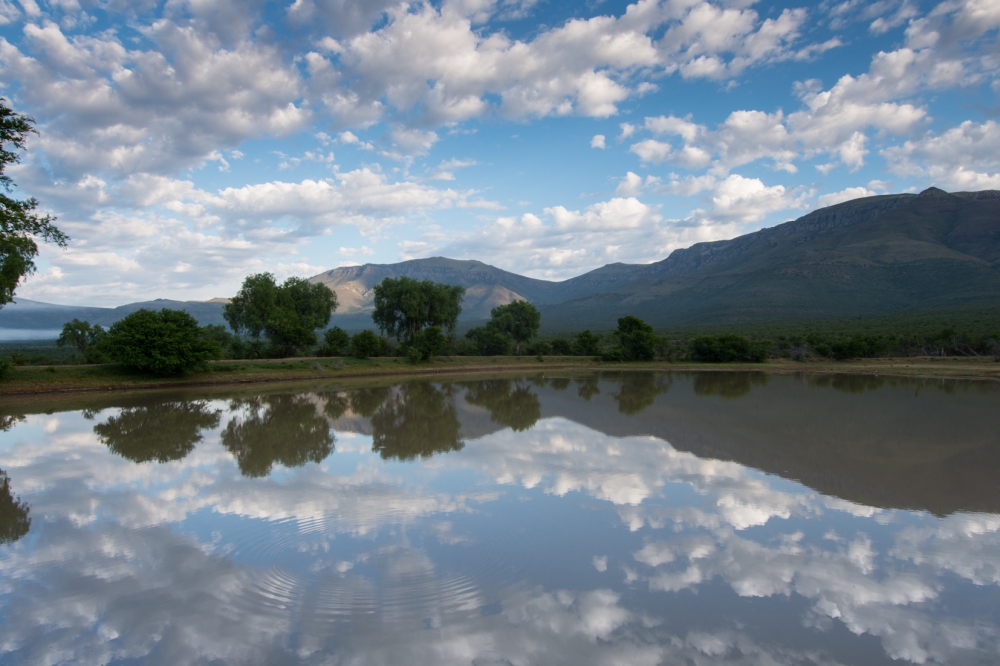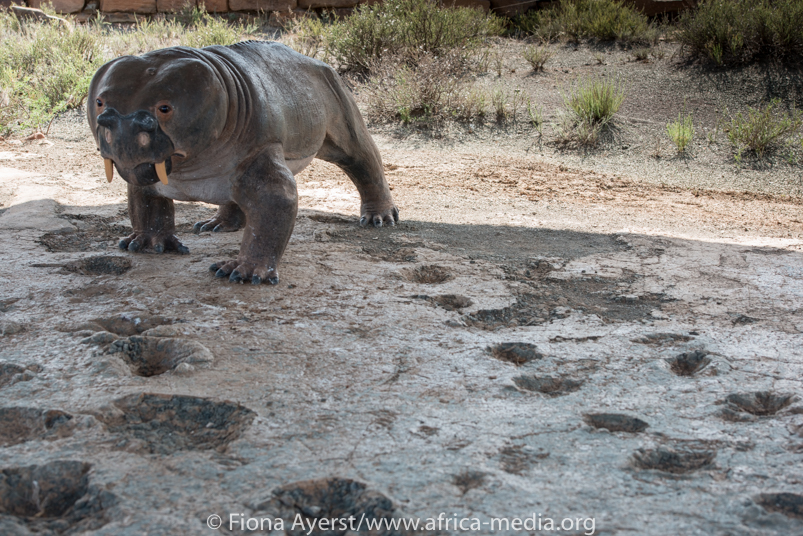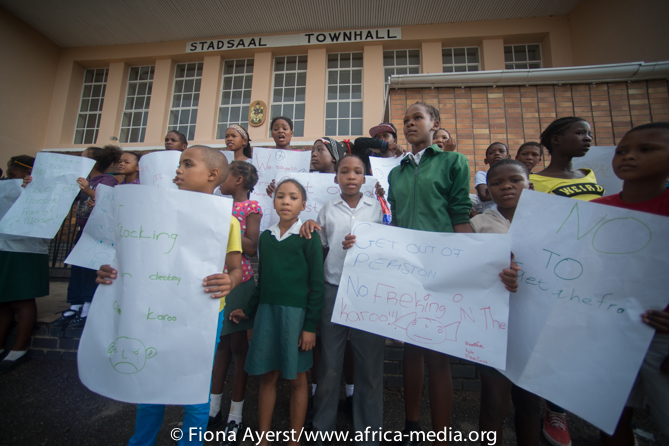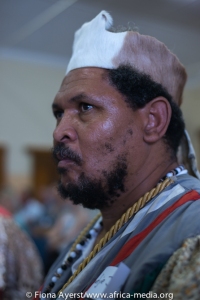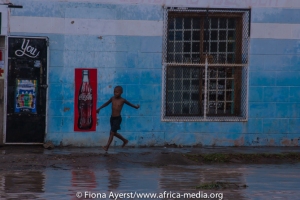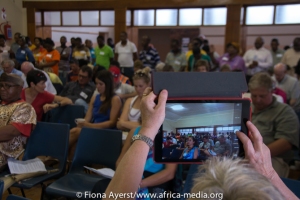Whale of a Tail
Posted on November 2, 2015
Whale sharks are the gentle giants of the sea. Encounters with these beauties rank near the top of any diving bucket list. With a head like the front of a bus, a dotty body and tiny eyes that don’t match its girth, this gentle animal is the largest fish in the ocean.There is an intense thrill in diving or snorkeling with the docile whale shark. This causes thousands of hopeful thrill-seekers to flock to places where the sharks may be found.

Once in a while you get to experience life-altering scenes like this- dolphins playing with a whale shark
Thus the charismatic whale shark is an ambassador for the ocean and a tourist draw card bringing in much-needed moola for poor countries. Strangely enough, the whale shark is often found in the shallows of some of the poorest nations on earth. I wonder if this is a co-incidence?
Mozambique is home to one of the greatest concentrations of whale sharks in Africa. The coconut lined beaches and colourful reefs of Mozambique are swoon-worthy, off-the-beaten-path adventurous places that win you serious bragging rights on social media. Most encounters with the whale sharks happen whilst you are on snorkel and when the animals are feeding on plankton and krill near the surface.
When to Go: November through February offers the best conditions to view these animals.
Operators: Operators: Guinjata Dive Centre https://diveguinjata.wordpress.com/ is a friendly and efficient dive center based South of Inhambane and offers ocean safaris to see the whale sharks . If you are staying in Tofo then try Peri-Peri divers for a hot day out with the whale sharks.http://www.peri-peridivers.com/
Price Tag: Ocean Safari’s are around R350-500 per person depending where you dive.
I have added an album of some of my favourite photos of whale sharks which I hope will get you in the mood to visit.
Fiona Ayerst
2 November 2015
Asante Sana
Posted on October 29, 2015
The Karoo remains a firm favourite of mine. As I write this blog I am so excited. I have been looking for some time and I feel have found paradise there. It’s hard to put into words as you have to see it. There’s a depression in the land- a valley- surrounded by majestic hills. The valley has a tree-lined river running through it and there’s a flood plain so that all the grass is super green; sweet and juicy.
Above all it’s tranquil. If all that sounds like paradise then add the 100’s of animals that live there: and there you have it. Paradise.a sister version of the famous Ngorongoro crater in Tanzania.You can view the fossilised footprints of a dinosaur and as you gaze on the replica you truly feel transported back in time.
Recently, I spent a weekend soaking up the animal life and the sun. I am so super excited to take my interns there in 2016. Until then, Asante Sana baby and I hope you enjoy the small album of photos I have posted.
Fissures and Schisms
Posted on February 25, 2015
It appears that fracking will certainly be cracking- but not only the rocks.
On a steamy Karoo Friday 13th Feb 2015 I sat through a regulatory public meeting in the Pearston town hall.The meeting had been convened by Australian owned Bundu Oil &Gas (“Bundu”).They (together with Falcon and Shell) want the right to explore the shale rock under the Karoo crust looking for gas. Fracking is the slang term for hydraulic fracturing (for the uninitiated there is a description of what fracking is under this post courtesy of Julienne du Toit of Karoo Space), which is being touted by the government as a potential solution to both current and long-term energy crises in South Africa. Outside the Pearston town hall a group of school children had let Bundu know how they felt, with placards
The issue of fracking is shamelessly splitting people into sides. For many South Africans, since the end of apartheid, there has been a wobbly but growing sense of nationhood in a race-sensitive society and fracking threatens to tipple this balance back to the wrong side. In the red corner, for fracking, we have the multitude of unemployed in the arid Karoo basin. In the green corner, against drilling into the crunchy crust we have the minority; white landowners; farmers or “boers”. The farmers are, for the most part, concerned for their groundwater spreading in arteries across the Karoo, linking farms and lives.
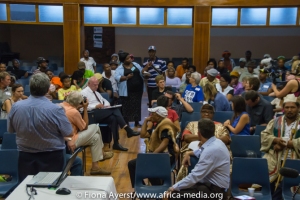
The meeting was split into those who had no jobs and needed them, and the farmers: it was a real boxing ring
Also present at the meeting were the first indigenous people who are now split into many clans; the Khoikhoi (“Khoi”) whose forefathers hunted and gathered (and ultimately herded) in the Karoo.The Khoi clans have taken a stance and now sit, somewhat surprisingly, in the green corner. They say the exploration guys are misleading the people and their promises of employment somewhere;sometime in the future,simply cannot be true. They may be “right on the money”.
As I sat straining to hear the debate a sudden and violent storm blew up,bringing loud claps of thunder and gushes of muddy water down the main street of the impoverished village of Pearston; there was a palpable wondering- was the storm a portent of massive possibility or massive loss? Could the turbulent muddy water mean wealth and abundance for all or was it a premonition of looming trouble?
Pearston is in the Karoo, a thirsty semi-desert stretching, across a third of South Africa that is ecologically rich. It is also one of the country’s poorest regions economically. In some of the smallest towns of the Karoo unemployment is as high as 90%, with welfare grants often the main source of income. In Graaff-Reinet, one of the wealthiest towns of the Karoo, unemployment figures are more than 30% and increasing according to the Democratic Alliance’s Samantha Jankovich.
The issue of employment was a rift which was already more than a hairline fracture. As Friday the 13th of February 2015 wore on, so the crack grew to a chasm.
When it was pointed out that the local unemployed were expecting something along the lines of Mossel Bay’s PetroSA, Robert Willes, the MD of Bundu stood up and set the record as straight as a crooked line. True story (he really used all these avoiding words i have put in italics I promise):
“We don’t think this (another Petro-SA ) will happen here. The gas we get will goes into power generation somewhere else and Bundu won’t be involved. It’s really hard to be specific about this because we don’t know how all these steps are going to work or if the business is going to work at all.”
“There would probably be some sort of development somewhere in the exploration area and perhaps the dimensions of such a development might be measured in tens of square kms rather than thousands. I think we would probably be looking at some direct employment.” Willes ended this ambiguous monologue by promising to be cognisant of unemployment problems.
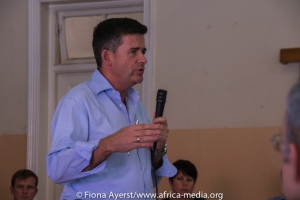
Robert Willes of Bundu tries to explain gently that there will be very few jobs for locals. He needs a 100% score for avoidance techniques.
Even after Willes’ vague rhetoric regarding employment local ANC stalwart and religious leader of the Pearston community Jersey Charlie said to thunderous applause:
“I was born here in Pearston in 1947 and grew up here. We are suffering here. We are going to stand together and hope there is gas. The gas exploration must go on.The people who say that Bundu must not be here, those are the rich people.We say Bundu must come. Bundu, no one can stop you. The oil is there. The gas is there. The people must have all this. Stop pushing us down!”
Charlie Froelich (88) a former major of Pearston said:
“I think there has been a misunderstanding about job creation. The people here think they are going to get rich and that there will be permanent jobs. That is not going to happen.”
There was applause from the people sitting around Froelich but the crowd at the back were heckling Froelich, saying
“You’re already rich (sic)!”

Charlie Froelich repeated what Willes had said without using platitudes, but the crowd didn’t think he was telling the truth
The Bundu Updated Environmental Management Programme Report in support of the application for petroleum exploration rights (sic) is on the www. On page 49 paragraph number 6.6.4.5;
” …The reality is that the majority of work …will be carried out by skilled professionals. Initial work (it came out in the meeting that this could take up to nine years) will be desk-based. The actual period during which drilling crews will be in the field will be limited to a few months. The appointed drilling contractor is likely to bring in a skilled team to operate their drill rigs. There may be limited opportunities for local labour, but these cannot be assured at this stage”.
In a 2012 report by the South African Dept. of Mineral Resources: it is stated that fracking, could have a “major impact on the national economy” and create “direct employment opportunities…likely to number in the tens of thousands”.
So on and so forth; the day proceeded with the elements mirroring the separation. As massive drops began to sputter on the tin roof, Jean Burgess, Princess of the Gonaqua Khoi said emphatically to a heckling audience:
“There aren’t lots of jobs. Maybe three or four but in my book that’s not lots. I think ten is a lot “
As far as the African National Congress is concerned – secretary-general Gwede Mantashe has announced that moving ahead with fracking is non-negotiable for a government keen to kick-start the stagnating economy and South African fractivists may end up in court.
Instead of uniting a local community it seems that fracking is set to divide the Karoo not only literally but also figuratively. Splitting rocks is something the applicants Shell; Bundu and Falcon have much collective experience with. Dividing people is another story altogether and a dangerous one with the potential to cough-up more than just a natural disaster. It appears that the foreigners may not have considered that they sit on a fine line and could alienate everyone from everything. The ripple effect of deeper rifts in both the land and the people of the Karoo could prove cataclysmic to this sensitive area and its people.
Fiona Ayerst
February 2015
What is fracking in easy terms ? ( words by Julienne du Toit of www.karoospace.co.za . If you want more info on fracking and the current state of affairs please follow Karoo Space as they live in the area and all the reports there are hot off the press )
Fracking is short for ‘hydraulic fracturing’, an American way of breaking up rock deep underground using millions of litres of water, sand and chemicals pumped deep into the earth under high pressure.
This creates cracks in the rock, releasing gas.
The gas is called methane, but some people call it shale gas. If it is ever extracted in South Africa, this gas would probably be used to generate electricity.
Fracking is a method that was first used in America in 1949, to ‘stimulate’ oil wells that were close to being depleted.
But the fracking being done now is very different to what was done then. In the 1990s, a new method was been pioneered and is technically known as horizontal slickwater hydraulic fracturing
It uses far more water and far more chemicals than the old ways of fracking.
Each time they frack a well, they use between 6 million and 25 million litres of water. This is enough to fill between 3 or 10 Olympic-sized swimming pools.
In addition, they use up to 20 tons of chemicals, along with sand.
In this method, the drill is turned sideways once it reaches the shale layer (usually 3km or more underground) and can go at least another 2km. Then small explosive charges are set off underground to create cracks in the rock. The sand is there to keep the tiny cracks open.
The gas then comes up to the surface, along with between 30 and 60 percent of the wastewater, which is toxic and has to be disposed of as hazardous waste.
Model Mayhem- the Underwater Photography Guide to Models
Posted on November 26, 2014
As a continuation from my last post on working with people in water- there is a significant difference between working with people in water whilst on SCUBA to working with someone modelling in a pool. For today’s blog, to get the very best form from your model in the ocean, here are some tips to consider:
Planning
To get a photo like this, planning is key and so let’s start there:
- You must have a plan. Know what you want to shoot and show your model either drawings you have made or previous pictures you shot- showing them what you expect and what you are trying to create.In this case I worked with a model who is a brilliant diver and also a photographer and so when I told her how I wanted the manta ray to swim between us to get a forced perspective and for her to pretend to be photographing it- she knew exactly what I meant! As you only have a second to get a shot like this, pre-planning it is key.
- Choose a model who knows how to work and behave around coral and fish or mammals in the ocean.
- A mask is almost always involved in the ocean and so the crazy frog face that hounds freediving photos doesn’t really happen as often here. However, chat about where you want your model to look and what you would like them to do with their hands and feet. i.e must they point their toes and close their legs? Try to ensure they tie up loose hoses and other diving accessories. As you can see from this photo having a diver just plum straight look at you- looks really silly.
As you can see from the next photo- having the diver look at something that really matters makes a huge difference.
- Try to ensure that the water is a comfortable temperature to work in and if not- that your model has an appropriate exposure suit. In this photo the spring water was warm enough for my model to wear a swim suit but that may not always be the case.
- After diving, if you intend to publish your images for commercial use, make sure your model signs the necessary model release form(s).
- When considering what to dress your model in try to avoid gear that has names of brands brightly emblazoned across it. If selling to stock there could be issues with trademarks that will make the agency reject your otherwise perfect photo.
- Ensure your models mask is not fogged up- ever- in any of your photos.
Working with the model
Communication
It is difficult to communicate effectively underwater. Thus you must have had a very thorough pre-dive briefing:
Hand signals:
You must give your model clear and straightforward hand signals, of which there can be many. Signals I would recommend discussing and using with someone you haven’t worked with often are:
(1) come closer / move back; (2) stop; (3) move up / down; (4) horizontal / vertical (body orientation); (5) face this way / face the other way; (6) keep legs straight; (7) swim slowly here / there; (8) repeat shot; (9) point toes (10) flip on your back (11) look at me / look at the subject / look over my shoulder/look up or down
Orientation of the model
Signal your model to orientate themselves vertically, or horizontally and facing sideways, and keeping their legs fairly straight, so their outline will be clearly visible as a “diver” in your image.
Movement by the model
Because your model has to breathe constantly, bubbles are inevitable and they can ruin shots, so you may want to time your shot when they inhale. However when captured just right, a stream of bubbles from a diver can look great because it adds motion to a ‘still’ image, and enhances the underwater feel to the viewer.
Marine animals cannot be briefed to move this way and that, so ensure your model knows that they need to move around the animal as you have agreed or where possible, as you direct. Everything happens very fast and a bad model who is not comfortable in water can destroy the shots.
Eye contact
looking into the camera can work sometimes but more often, when working with a model looking at fish-life or coral it looks better to have them looking at the subject. Up close, be aware your model could blink as you take a shot, so you should review each image to pick up on faults like this, so you can re-shoot.
Camera settings and lighting
Unless you are shooting in the top 3 meters of water you need strobes. If you are in bright sunlight and shallow water using ambient light then I recommend using a custom/manual white balance and shooting around 1/250th sec, f/11+ and ISO 100. If you’re shooting upwards towards the sun, perhaps to capture your model’s silhouette, then turn off your strobes and use a faster shutter speed and higher apertures (1/500th sec, f/11+) depending on your ambient light. Camera settings obviously need to be changed for various conditions, or to achieve a certain effect, and you should gradually learn what to change and when. For a lovely reef shot in clean blue water I usually work by starting at ISO 200 and F7.1 or 8 at 125th of a sec and getting in to within 1 meter of my subject whilst using a super wide lens. I review the photo and use my histogram to check exposure and if too dark I make the necessary adjustments and re-shoot.
Composition
If your model is far from you, avoid shooting towards the reef/wall etc. so they don’t blend into the background. Try to shoot away from the reef/wall if possible, and isolate the diver with blue water around them. Foreground subjects are the star of the show, so should fill more of your frame, and keep the background model away from the centre, in one quarter of your frame.(google -rule of thirds- if this is not clear to you) .
In this photo you can see a number of compositional elements –
One is having the diver swimming into the photo slightly towards you and not sideways out of the photo. Secondly, people’s eyes tend to read from left to right in the western world which is where your photo is likely to be published. Consider that also, if you have time. Note the great lighting on the face and the choice of a clear rimmed mask. One issue with this photo is the sharklife trademark but as the author is a director of sharklife that isn’t a problem in this case. Phew!
Managing Expectations
If your model is doing you a favour remember you probably ruined their dive as they haven’t had time to look at anything except your lens. I often pay for my models to dive (except for my husband when he models for me!) and also offer them free photos for their time. I have never had a model ask for anything more than that but it is a good idea to check with them what their expectations are.
Happy shooting
Fiona
November 2014







